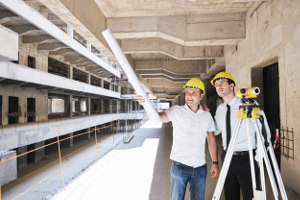Building Product Reps: How to Get a Piece of a Billion Dollar Business
- < 3 Reasons Why Your AIA Education Course is a Waste Of Money
- > Why Building Product Reps Should Avoid Short Term Sales
So, you manufacture a great building product. It’s sustainable, it can contribute toward LEED points. It’s even pretty. Yet, no one is specifying it. So, what do you do? You acknowledge that you are in the right business, at the right time. You just might not have the right tools.
Green Building Is Here to Stay
According to the USGBC, green building is outpacing overall construction growth in the US. By 2018 the green construction industry will have a direct contribution to the US GDP of $303.5 billion. That’s billion – with a ‘B’. So – with all of this green construction, how do you get a piece of that pie?
Green building isn’t going anywhere, so don’t think you should switch businesses or focus. Having a green product that can contribute towards points in the LEED system is a big selling point. The LEED green building certification system is the foremost program for the design, construction, maintenance and operations of green buildings. In 2016 3,366 projects were LEED-certified. That represents 470.39 million square feet of construction. Your building product can be part of those numbers.
Presentation
If you walk into a presentation with the same old line of ‘it’s the best product on the market’, or ‘it’s the most cost effective purchase’, the message will go in one ear and out the other. If you start your AIA CE presentation with the fact that the average expected lowered energy cost of 10 – 20% will allow a green building to pay for itself in just seven years, that might just turn some heads.
Knowledge = Power
This idea directly relates to key points in how to present your building product in order to get specified. You need to know your business. Start by becoming familiar with the budgetary restrictions of the building project. Don’t go in blind. You might go into a meeting with architects and present a building product that fits every need they have and find out they have the budget of a church mouse. You have now wasted their time and yours. Another aspect to consider is to understand the hierarchy of need vs. want in your buyer. Are they trying to design the ‘greenest’ building (want) with a shoestring budget? If they are, they really need to focus on their bottom line (need). Are they looking to build a utilitarian beast (need) with a budget the size of a small country (want…yes, you want that)?
Know Who You Are Talking To
You can’t get specified if you don’t talk to the people who can get you specified. If you aren’t talking to the person who makes the decisions, at least talk to the person who holds the ear of the person who makes the decision. Know who you are talking to – and their decision-making limitations.
Brand Awareness
Last but not least, it’s all about brand awareness. In a previous blog, we talked about the need for architects to know who you are and what you represent in order for them to let you in the door. There are powerful specification strategies to make sure that when they think about your industry, they think about you. Developing AIA continuing education is exceptional for brand awareness because it capitalizes on a need (CE credits to maintain credentials) with a want (an interesting way to get their needs met). Having the necessary documentation at any given moment is another valuable way to reinforce brand awareness.
How are you guiding your business to take a bite out of the billion-dollar business that is green building? What strategies is your company using to get in front of architects?
For more information or to discuss the topic of this blog, please contact Brad Blank





